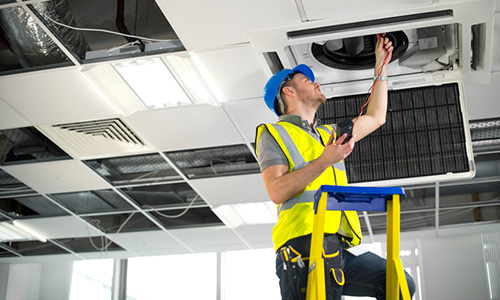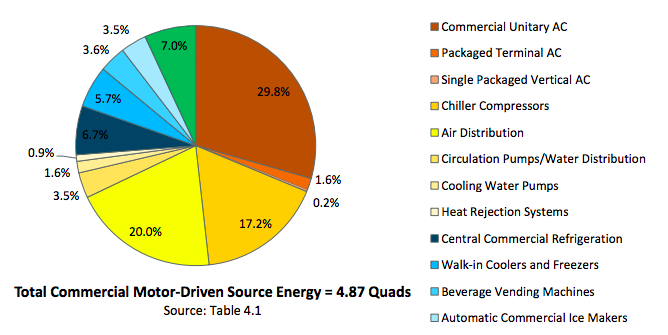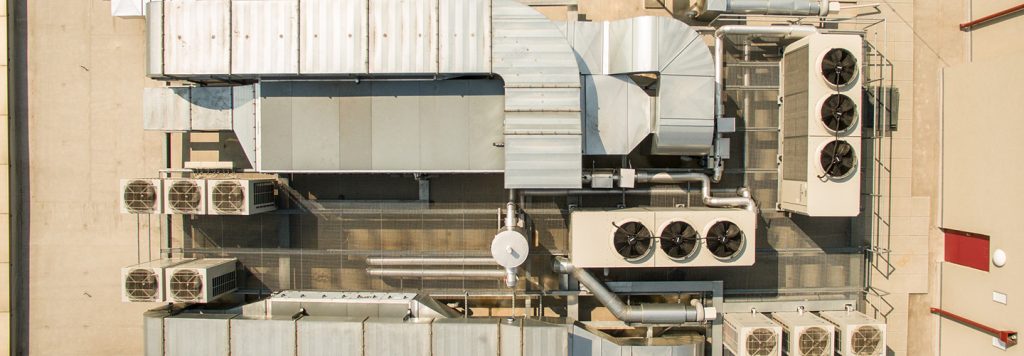{Each quarter we highlight a top performing trade partner as a feature story in our Energy Exchange newsletter. These companies qualified for our Energy Efficiency Partner Awards based on their projects submitted in 2017.}
What exactly is the lifespan of a commercial building? That can vary greatly depending on materials, maintenance, use, and location. Many buildings will stand for 45, 50, 80 even 100 years. But the usability of a structure is what really matters. Most vital building components such as mechanical and HVAC systems will typically age-out around 25 years of life. However, that can range from 15 to 45 years of use. So in a sense, a building will eventually have a mid-life crisis.
Since 2004, the folks at ESCO (Energy Service of Colorado) have been retrofitting commercial buildings all around the Denver area — helping many structures attain that second life of usefulness.
The 1980s called, it’s time to upgrade
Founder and CEO of ESCO, Charlie Klapperich feels the demand in the market is driven by the fact that so many buildings built in the 1980s are now reaching mechanical and HVAC systems obsolescence.
Klapperich comments, “We are coming off our busiest year yet, and 2018 has been starting strong. Many building owners are faced with an all or nothing situation, meaning they are up against the need for a complete retrofit of equipment that is well past the life expectancy.”
That demand for updating has been rising. Klapperich goes on to say, “the total spend seems to be more significant. The economy is warming up, and money is still relatively cheap. That’s part of the reason for expanding budgets. Also, building owners want state-of-the-art systems that focus on convenience for them and comfort for tenants.”
Remote controls offer localized comfort
Today’s IP (Internet Protocol) and IOT (Internet of Things) components along with an open system approach are delivering a new level of effectiveness for companies like ESCO. According to Klapperich, controls are now localized, wireless and smaller, which makes for easier installation, positioning and provides more real-time feedback to answer comfort concerns. Also, more robust historical data can now be gathered to benchmark energy use.
Klapperich reflects, what’s ironic about building components is the fact that the basics remain the same. For the last 50 years or even longer, there have been fans, dampers, valves and switches running mechanical and HVAC systems and functions which move and control air or water. Yet now with more advanced controls systems, everything old is new again.

Comfort expectations also rising
Another trend Klapperich sees today is that tenants are demanding much more from their working environments. Temperature and humidity control is essential. Today our vehicles feature heated and cooled seats, so an uncomfortable workplace is entirely unacceptable.
The modern control systems can now alert building management staff to fix problems before they become a tenant issue. Plus with localized controls, tenants are free to create just the right setting for their office space. As a result, those comfort calls that building managers despise, are down.
The energy efficiency paradox
Many building owners and managers claim they want to be energy efficient. Most simply do not take action. Even with energy efficiency projects showing an ROI (return on investment) or payback time is as little as two years, and at most up to four years; the opportunity is wasted. Klapperich recalls an electric heat project he bid unsuccessfully in 1994. It had six-month payback. Imagine the cumulative savings 24 years later!
The decision-making dilemma
Today, many facilities managers are often reluctant to ask their management to spend money on energy efficiency through mechanical and HVAC systems. Some of this is based on the fact that their contracts may contain agreements for them to be compensated on a percentage of expenses on the building.
Klapperich suggests, “To sell energy efficiency projects, pitch it to the building owner. They see the long-term economics more than the on-site managers. Also, use rebates–they help get attention.”
Another new trend playing out is for tenants to pay their energy bills. Even with reasonably inexpensive energy costs currently, this has spawned more interest for energy savings efforts to be used in the building.
Innovations happening now
According to the U.S. Department of Energy, electric motor-driven systems and motor-driven components in appliances and equipment account for more than 25% of the primary energy consumption1 in both the residential and commercial sectors.

Motor-Driven Source Energy Graphic1
The challenge to diminish this consumption level is being answered with the advancement of VFDs (variable frequency drives). Klapperich reflects, over the last four decades, power electronics technology has reduced VFD cost, size, and operating sound levels. Also, VFD performance has been improved with advances in semiconductor switching devices and control hardware and software.
Research from the European Union’s Energy+ Pumps Project suggests “Even a small reduction in speed can give significant savings. For instance, a centrifugal pump or fan running at 80% speed consumes only half of the energy compared to one running at full speed.2
Another feature Klapperich points out is that VFDs provide a soft start process which uses an internal control system to regulate the energy needed. This is much less damaging to the motor and adds to the motor’s lifespan.
Xcel Energy realizes the energy-savings opportunities that VFDs provide and encourage their use in mechanical and HVAC systems. Learn about Xcel Energy’s VFD rebates here.
New glass creates variants of shade
Klapperich goes on to mention another new building component that is helping buildings become more energy efficient is the incorporation of shading glass. This glass material creates controlled shading to reduce the harmful effects of the sun. Now a building management system can leverage this shading glass to utilize natural daylight and also contain the heat and glare of direct sunlight as it changes throughout the day, and the season.
Retrofitting sell points
Mechanical and HVAC system upgrades or complete retrofits are attractive ways for building owners or operators to grow future value. Newer equipment teamed with integrated control systems can bring real, long-term benefits:
• Boosting workplace productivity with greater comfort
• Using energy savings for long-term expense stability and budget control
• Attracting better tenants, faster with state-of-the-art HVAC amenities
Financing options available
The C-PACE (Commercial Property Assessed Clean Energy) is a program for property owners to finance energy efficiency, renewable energy, and water conservation upgrades to commercial buildings. It is one of the options offered within the Xcel Energy Financing Program. You can watch a short video describing how the financing program works here.
And learn about Xcel Energy’s energy efficiency financing here.
Xcel Energy is committed to helping businesses and organizations run leaner by leveraging today’s most innovative energy efficiency solutions with mechanical and HVAC systems. Connect with our experts to start exploring ideas for your next project.
Contact
Derek Shockley for lighting programs, John.D.Shockley@xcelenergy.com
303-294-2082
Robert Macauley for all other programs, robert.macauley@xcelenergy.com
303-294-2675



